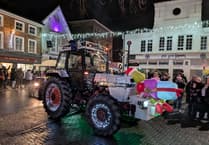THE UK’s housing crisis is often high on the news agenda, but recently a more rustic type of accommodation, home to the UK’s smaller, spikier residents, is taking the spotlight.
Last month the first ever national Hedgehog Housing Census was launched by Hedgehog Street.
The nationwide campaign set up by wildlife charities the British Hedgehog Preservation Society (BHPS) and People’s Trust for Endangered Species (PTES), aims to help combat the ongoing decline in native hedgehog population numbers.
This survey is in partnership with the University of Reading and Warwickshire Wildlife Trust.
Between now and October 31, the Hedgehog Housing Census will dig a little deeper into the world of hedgehogs, answering several questions about how they live and in particular, their use of artificial hedgehog houses, which, have not been studied, despite thousands of people having one in their garden.
The information will be gathered via an online survey, and the data then analysed by scientists at the University of Reading.
The results will help the Hedgehog Street team find out what the best type of hedgehog house is and how they can be used to support the conservation of these animals, enabling wildlife enthusiasts across the UK to further help their spiky garden residents.
The data collected will be analysed over the winter months, with the results due to be published in spring 2018.
To take part in the Hedgehog Housing Census, register as a Hedgehog Champion or for more information about hedgehogs, to go www.hedgehogstreet.org/housingcensus.




Comments
This article has no comments yet. Be the first to leave a comment.